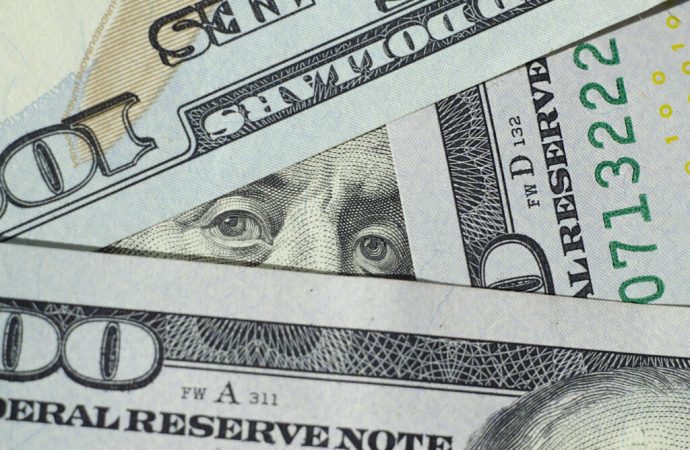Saving for a down payment on a house can be one of the most significant financial goals you set. A down payment is a lump sum of money you pay upfront when buying a home, typically ranging from 3% to 20% of the home’s purchase price. The larger the down payment, the better the mortgage
Saving for a down payment on a house can be one of the most significant financial goals you set. A down payment is a lump sum of money you pay upfront when buying a home, typically ranging from 3% to 20% of the home’s purchase price. The larger the down payment, the better the mortgage terms you can secure. This article will explore effective strategies to save for a down payment, analyze different savings methods, and compare them to help you make an informed decision.
Understanding the Down Payment

This image is taken from google.com
A down payment is crucial because it reduces the amount you need to borrow, potentially leading to better mortgage rates and avoiding private mortgage insurance (PMI). The size of the down payment can vary depending on the type of loan and the lender’s requirements. For instance, conventional loans often require a 20% down payment, while FHA loans may only require 3.5%.
- Setting a Savings Goal
2.1 Determine Your Target Amount
The first step in saving for a down payment is to determine how much you need. This depends on the price of the house you’re aiming to buy. For example, if you’re targeting a $300,000 home and need a 20% down payment, you’ll need to save $60,000.
2.2 Create a Budget
Once you have a target amount, create a budget to identify how much you can set aside each month. Track your income and expenses to see where you can cut back and increase your savings rate.
- Effective Saving Strategies
3.1 Open a High-Yield Savings Account
A high-yield savings account can offer better interest rates than traditional savings accounts, helping your money grow faster. Look for accounts with no monthly fees and competitive interest rates.
3.2 Automated Savings Plans
Automate your savings by setting up a direct deposit into your savings account. This ensures that a portion of your income goes directly towards your down payment goal without requiring additional effort.
3.3 Reduce Expenses
Review your spending habits and find areas to cut back. Consider reducing discretionary spending, such as dining out, entertainment, and subscriptions. Redirect these savings into your down payment fund.
3.4 Increase Your Income
Consider ways to boost your income, such as taking on a part-time job, freelancing, or asking for a raise. Extra income can significantly accelerate your savings progress.
3.5 Invest Wisely
Investing in low-risk options, such as bonds or index funds, can offer higher returns than a savings account. However, be aware of the risks and ensure that your investments align with your timeline for purchasing a home.
- Analyzing Different Savings Methods
| Savings Method | Pros | Cons | Best For |
| High-Yield Savings Account | Higher interest rates, low risk | Lower returns compared to investments | Short to medium-term savings |
| Automated Savings Plans | Consistent savings without effort | May not allow flexibility if financial situation changes | People with steady income |
| Expense Reduction | Immediate impact on savings | Lifestyle changes may be difficult to maintain | Those looking to cut spending |
| Income Increase | Accelerates savings growth | May require significant lifestyle changes | Individuals with flexibility |
| Investing (Bonds/Index Funds) | Potential for higher returns | Market risk, may need longer time to mature | Long-term savings, higher risk tolerance |
- Comparing Savings Methods
The table below compares the effectiveness of different savings methods based on key factors such as return on investment, risk, and time frame.
| Savings Method | Interest/Return Rate | Risk Level | Time Frame for Goal | Flexibility |
| High-Yield Savings Account | 1-2% | Low | Short to medium-term | High |
| Automated Savings Plans | N/A | Low | Short to medium-term | Medium |
| Expense Reduction | N/A | N/A | Immediate impact | High |
| Income Increase | N/A | N/A | Medium to short-term | Medium |
| Investing (Bonds/Index Funds) | 5-8% | Medium to high | Medium to long-term | Low |
- Final Tips for Saving
6.1 Stay Disciplined
Commit to your savings plan and make adjustments as needed. Regularly review your progress and stay focused on your goal.
6.2 Avoid New Debt
While saving for a down payment, avoid taking on new debts, which can impact your ability to save and qualify for a mortgage.
6.3 Seek Professional Advice
Consult a financial advisor to help you create a tailored savings plan and investment strategy. They can provide personalized recommendations based on your financial situation.
7. Exploring Government Programs and Assistance
In addition to personal savings strategies, various government programs and assistance options can help you reach your down payment goal. Many first-time homebuyers may qualify for grants or loans that can reduce the amount of money they need to save. For example, the Federal Housing Administration (FHA) offers loans with lower down payment requirements, and some states have down payment assistance programs that provide funds or forgivable loans. Research local programs in your area and consult with a housing counselor to explore these opportunities. Taking advantage of these resources can make homeownership more accessible and reduce the financial burden of saving for a down payment.
8. Building a Strong Credit Profile
A strong credit profile is crucial when saving for a down payment and securing a mortgage. Lenders use your credit score to determine your loan eligibility and interest rates. A higher credit score can qualify you for better loan terms and reduce your overall costs. To build and maintain a good credit score, pay your bills on time, reduce outstanding debt, and monitor your credit report for errors. As you work towards your down payment, also focus on improving your credit profile to enhance your chances of securing a favorable mortgage and making homeownership more affordable in the long run.
Conclusion
Saving for a down payment on a house requires a combination of strategic planning, disciplined saving, and possibly increasing your income. By choosing the right savings methods and staying committed to your goal, you can achieve the down payment you need for homeownership. Whether you opt for high-yield savings accounts, automated savings, reducing expenses, or investing, each method has its benefits and drawbacks. Assess your personal financial situation and goals to select the best approach for you.
















